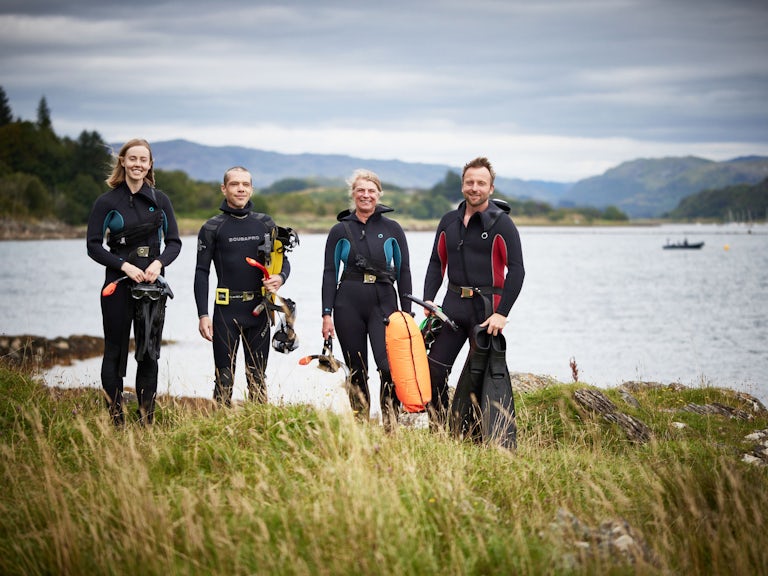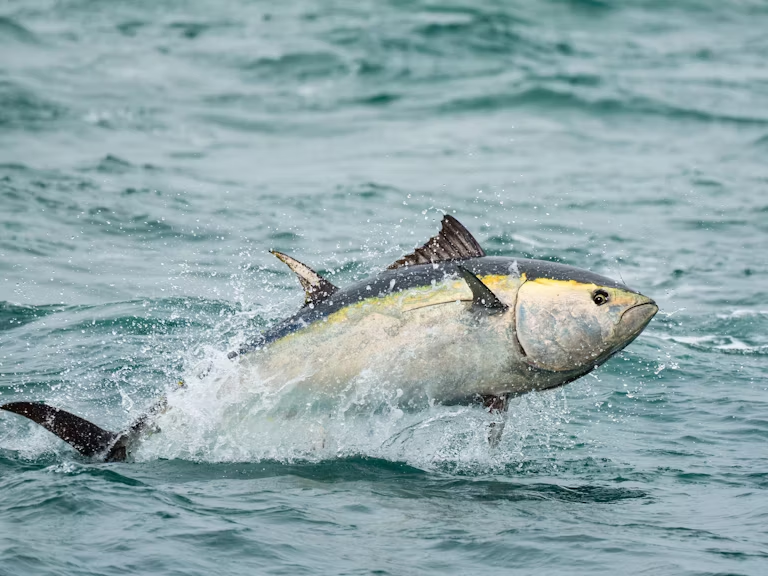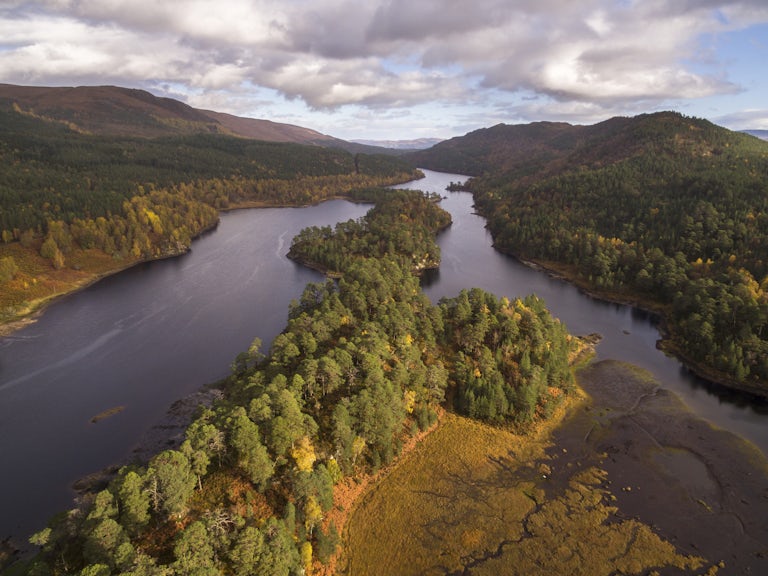Brown trout
Salmo trutta
A powerful predator with an uncertain future
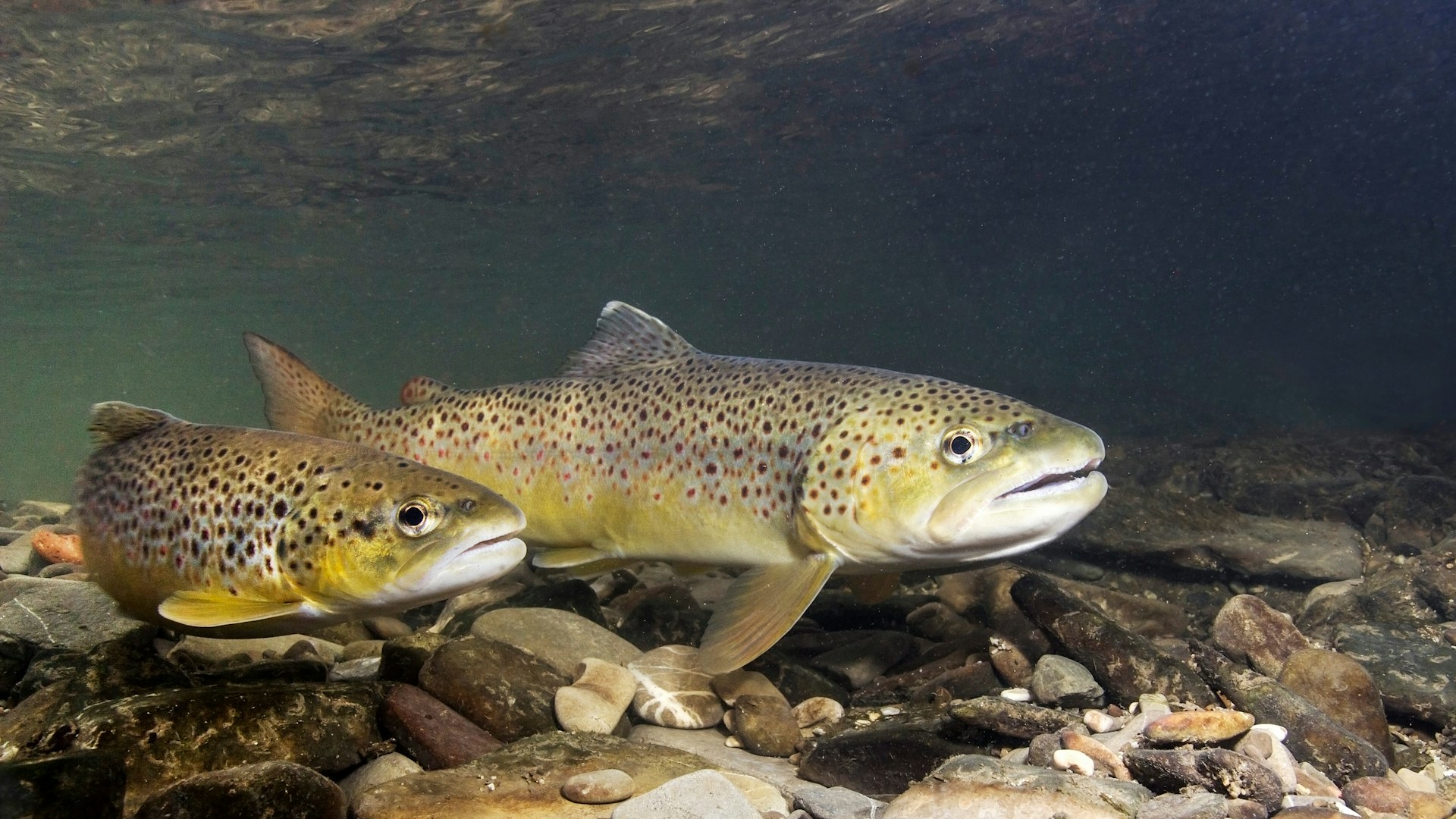
How it shapes its environment
This medium-to-large predator thrives in ecologically rich environments, feeding on invertebrates, larvae, crustaceans and small fish. Bigger trout might occasionally feed on small swimming mammals too, such as voles and mice.
Brown trout are a key biological indicator of river health, which gives them an important role in rewilding efforts [1]. As predators, their presence and numbers can tell us how healthy the river ecosystem is. A thriving trout population is a sign that interventions like rewiggling rivers are successfully restoring natural habitats.
Because both aquatic and terrestrial insects make up a significant portion of a trout’s diet, their presence and abundance can be a helpful indicator of the health of the land surrounding the river.
Where it likes to be
Brown trout are commonly found in streams, rivers, lakes and saltwater habitats across Britain, but they’re most at home in fast-flowing rivers.
Both sea and brown trout have recently been identified as the same species, with the former living in oceans but migrating to freshwater to spawn. Between January and March, female trout return to their spawning grounds and disturb the gravelly river bed when laying their eggs.
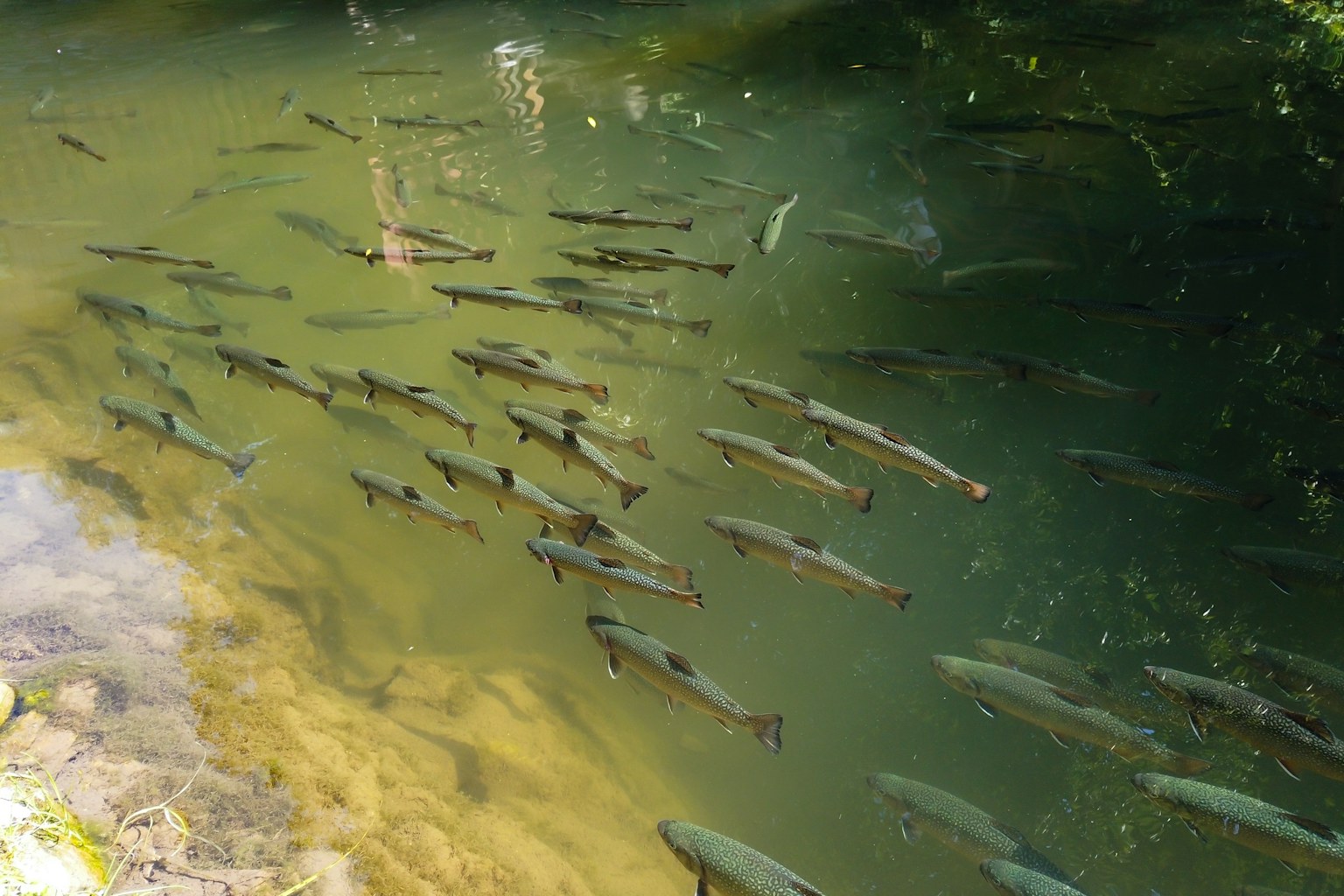
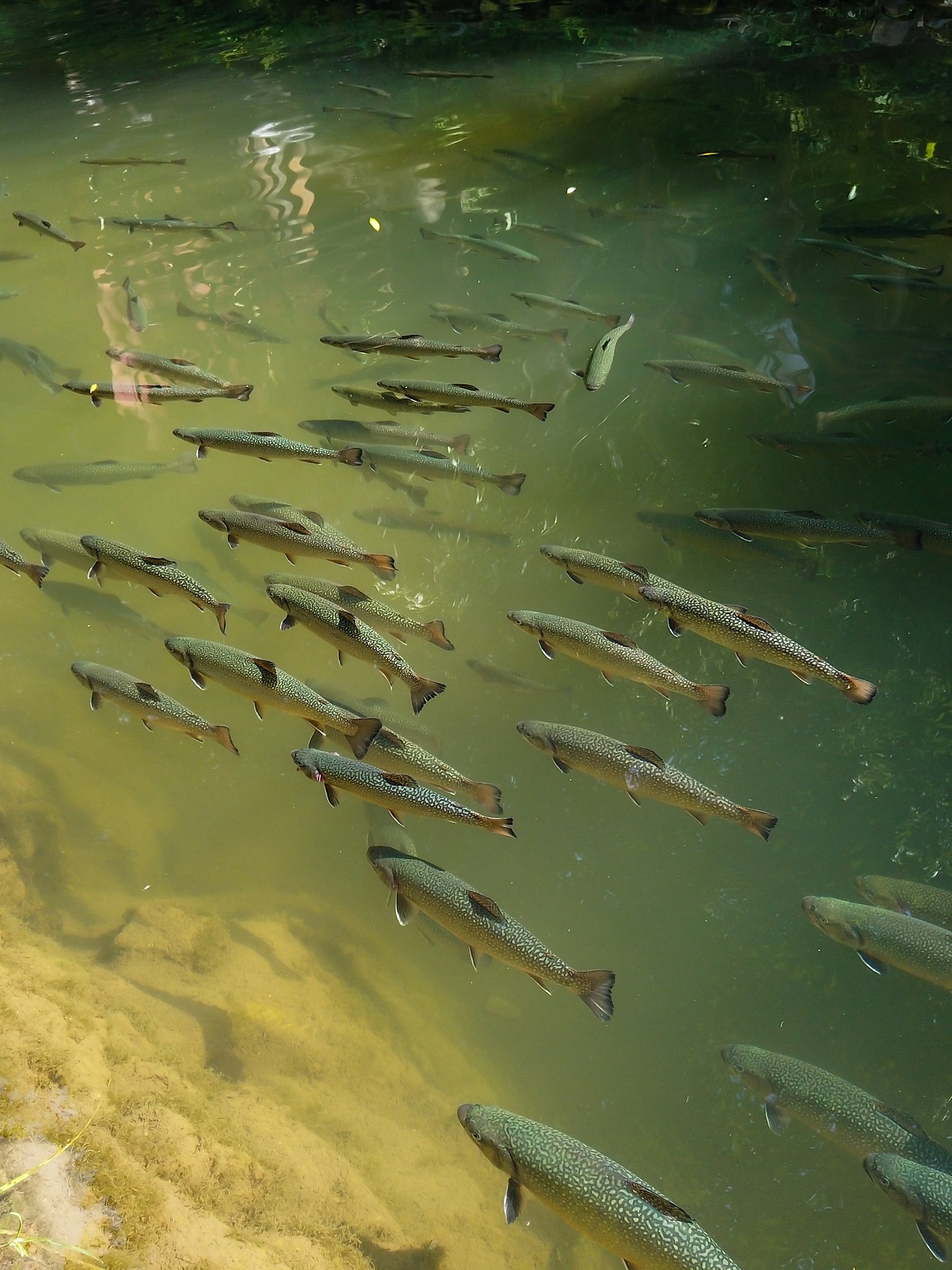
Did you know?
Brown trout can live up to 20 years.
How much space they need
Brown trout can thrive in almost any free-flowing river or stream, as long as the water is clean and at the right temperature. Trees, such as willow, along rivers are essential to this fish, offering shelter among their roots and providing valuable shade.
This native predator prefers complex river systems that offer a mix of light and shade, shallow and deep, and fast- and slow-flowing water to accommodate their different life stages. They also need the freedom to move throughout the water system to access spawning and feeding grounds, and find shelter. That’s why man-made barriers, such as dams, isolate and limit the movement of brown trout populations [2].
Background story
Also known as the river or lake trout, brown trout are an iconic species native to Britain [3]. Its native range stretches from Iceland in the north to Morocco in the south. While brown trout are not endangered, they are threatened by overfishing, pollution, habitat loss and climate change [4].
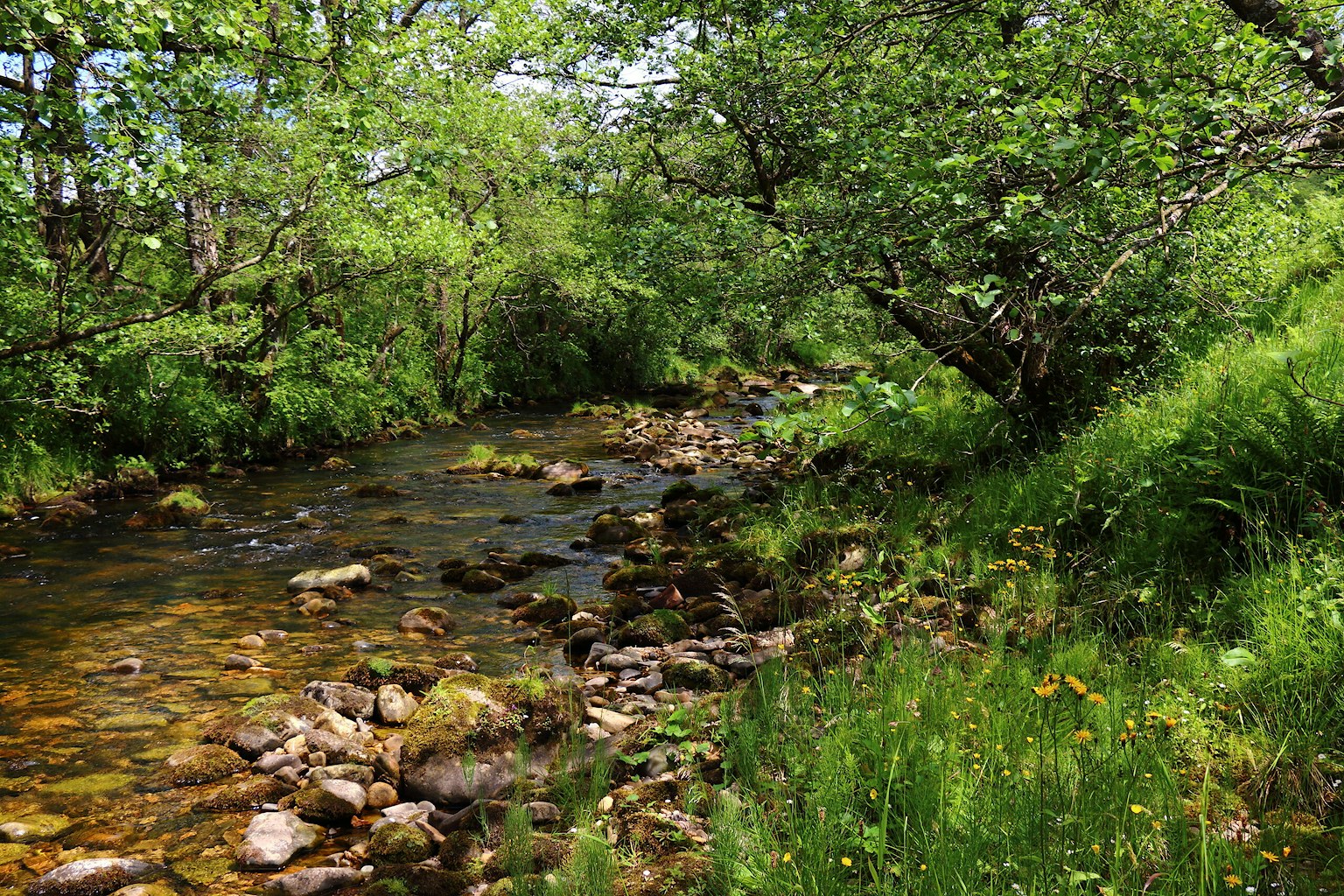
Can we have them in Britain?
Brown trout are abundant in Britain but are vulnerable to rising water temperatures. Adapted to coldwater habitats, they cannot survive temperatures above 23°C. Extended periods of hot weather, combined with a lack of shade along their waterways, leave them unprotected and can result in a drop in their population size – making climate change a major challenge for this species [4]. Luckily, many national parks already have action plans in place for brown trout [5].
While brown trout are currently present in Britain, their future remains uncertain – but rewilding offers hope. In Scottish rivers, research shows that beaver dams create deeper pools, improving habitat and food availability for trout [6]. The study demonstrated that not only did bigger individuals become more abundant, but the trout were better protected from predators. A brilliant example of how reintroducing missing keystone species such as beavers, and other wildlife benefits.
In summary
- A native species threatened by overfishing, pollution, habitat loss and climate change.
- Serves as a biological indicator – their abundant presence reflects a healthy ecosystem.
- Requires unpolluted and cold freshwater habitats to thrive, and is proven to benefit from the presence of beavers.
- Ayllón, D. et al. (2012). A new biological indicator to assess the ecological status of Mediterranean trout type streams. Ecological Indicators, 20, 295–303.
- North York Moors National Park. (n.d.). Brown trout.
- British Trout Association. (2024). Trout and trout farming from around the UK.
- Woodland Trust. (n.d.). Brown trout (Salmo trutta).
- Rewilding Britain. (2022). Eight species that could thrive in wilder national parks.
- Needham, R.J. et al. (2021). The response of a brown trout (Salmo trutta) population to reintroduced Eurasian beaver (Castor fiber) habitat modification. Canadian Journal of Fisheries and Aquatic Sciences, 78(11), 1650–1660.
